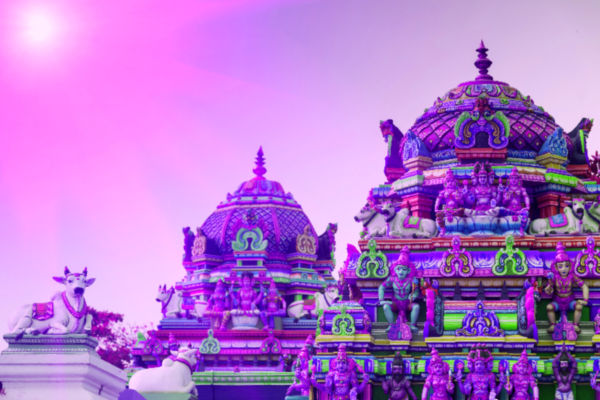
Recently, the culture surrounding psychedelics has been shifting. From clinical studies that show these substances to be both safe and effective at treating a range of mental and even physical health maladies, to an avalanche of celebrities coming forward to discuss how a psychedelic trip has improved their lives, the psychedelics taboo is quickly being erased.
It is therefore no surprise that many individuals are considering “taking a trip” of their own. Perhaps they have heard of how a psychedelic experience, if done correctly, can help alleviate anxiety, decrease depression, can lessen the fear of death, and increase their empathy.
And while this certainly sounds amazing, a lot hinges on the “if done correctly.” For as fantastic and transformative some experiences may be, many potential first time psychedelics users are held back by fears of the near-mythical bad trip.
These bad experiences, more often than not, are born of ill-preparation. LSD, magic mushrooms, and other classical psychedelics are powerful tools. But like all powerful tools, one must learn how to wield it before use. For example, you would not attempt to operate a chainsaw for the first time without first reading the user’s manual.
It is with this in mind that Psychedelic Spotlight has put together our own user’s manual: How to Prepare for Your First Psychedelic Trip in 5 Easy Steps.
[ez-toc]
Step 1: Research and Know Your Dose

The best way to avoid a bad psychedelic trip is by preparing well. This means learning everything you possibly can about any drug you are considering putting into your body.
The first thing you need to know is that both LSD and magic mushrooms are generally safe. Neither are considered to be addictive, and both are practically impossible to overdose on. The only possible exception is for people with serious mental health conditions such as psychosis. While there hasn’t been definitive clinical evidence that psychedelics negatively affect these people, there have been many anecdotal stories. So if you suffer from a serious mental health condition, please consult a doctor rather than self medicating.
When it comes to dose levels, for LSD, a low to medium dose constitutes 50-80 micrograms, or about half a tab. A regular sized dose is around 80-150 micrograms, or about one tab. And a large dose is anything north of 200 micrograms, or two tabs. Note that since LSD is unregulated, the potency of tabs can vary greatly. If you take a regular to large dose of LSD, the experience can last 8+ hours, and will start about an hour after ingestion.
For magic mushrooms, a low to medium-sized dose is around 1.0-1.5 grams, a regular sized dose is around 2.0-2.5 grams, and a large dose is anything north of 3.5 grams. If you take a regular to large dose of magic mushrooms, the experience will typically last between 4-6 hours, with the effect starting between 30 minutes to an hour after ingestion.
For your first experience, it may be advisable to stick to a low to medium dose. It’s better to dip your toes into the waters first, and then decide at a later date to dive in.
Step 2: Mindfulness and Preparation

Don’t think of a psychedelic trip as a one day experience. Rather, it’s best conceptualized as a month-long ritual, with two weeks of preparation before the experience, and an equal time spent on reflection and integration after it.
In the two weeks before, you want to focus on two things: 1) Preparing your mind and body. 2) Reflecting on your goals.
Regarding the preparation of mind and body, it is essential to know that psychedelics often amplify your psyche. For example, if you are anxious or scared, it can negatively affect your experience. Therefore, you want to enter the experience in the best possible mental space.
The first way to promote this is by being physically healthy. It is well established that a proper diet influences your mental wellbeing, so ensure that you are eating well and exercising in the weeks leading up to your psychedelic experience.
Moving into mental health, incorporate meditation into your daily routine. I know that meditating can seem hard or even impossible to many people, but it is okay to start small. Aim for 5 minutes a day. Just close your eyes and focus on taking deep breaths in and deep breaths out. In and out. You can maybe put on some calming meditation music and light some candles. The point is to not focus on the past or future, but the present moment.
In this period of time you also need to be reflecting on the why behind you taking psychedelics. After all, psychedelics can be an amazing tool, but tools need to be used for a specific purpose.
What is it that you want to improve in your own life? Do you wish to be more empathetic, less anxious, improve your relationships, better control your temper or be more hard working? Whatever it is, ponder how you wish to improve your existence.
The best way to do this is by journaling. Again, this can seem intimidating, but it need not be. Spend 5 minutes a day writing about how you wish to improve in your life. And then go deeper, write about what is holding you back from being this better version of yourself. Think deeply.
By journaling for at least 2 weeks, you will crystalize what you wish to improve in your life and what’s holding you back from accomplishing it. Chances are you already know the answer, you just need the help of the psychedelic teachers to internalize the message.
Step 3: Set and Setting

On the day of your psychedelic trip, it is important to ensure that your set and setting are proper. Set refers to your mindset, and setting your physical surroundings.
If you have already completed step two in this user’s manual, then you are well on your way to ensuring that your set is in the right place. Nevertheless, you want to make sure that on the day of, your head space is in the right place. Meditate and journal that day.
As for the setting, it is extremely important that you are in a safe, familiar and comfortable environment. This can be in your living room, in nature, etc. If you are indoors, make sure the space is uncluttered and clean, and maybe have a blanket nearby to cuddle up in. Make sure you have easy access to water and a washroom. Play calming but expansive music, and have your journal nearby to record any thoughts while you are in your experience.
I highly advise against taking psychedelics for the first time in a crowded environment like a party. While many people do have fantastic experiences in settings like this, for your first trip, you want the setting to be as controlled as possible. It is possible that a psychedelic can bring up unresolved trauma, which would be better to process on your own and with your trip sitter.
Which brings us to the last point, make sure that you have someone you trust with you, your trip sitter. When under the influence, you will be in a vulnerable position, and if you don’t completely trust the person you are with, you may become inadvertently anxious.
If you are able to find someone with previous psychedelic experience, that would be best. If they don’t have experience, it is important that they know that what you are doing is safe and you can’t overdose. If you begin feeling anxious, they need to be there for you, to hold your hand or hug you. To let you know that you are loved and that you have support. They don’t have to say much, just be physically present and give off loving and caring emotions.
Step 4: The Psychedelic Experience

The number one thing you need to do once you have ingested a substance such as LSD or magic mushrooms, is to let go.
This is often the most difficult step. When you feel your state of consciousness changing or even dissolving, it is natural to try to fight back. But it is this futile act of resistance that causes most “bad trips.” You have to release your consciousness, and trust that it will return.
Let your consciousness take you on a ride, merging with the music, your environment or even entering a universe of its own. If you allow it, your brain will show you amazing, incomprehensible things. It is possible that you have an out of body experience, relive old memories, have your perceptions of space and time distorted, or feel a oneness with the universe. Whatever the experience, again, it is essential that you surrender to it.
If you have thoughts that you consider profound, or experiences that you wish to capture, write it in your journal. But be warned in advance, some of what you write may not make sense in retrospect.
It is important to note that a psychedelic trip can be rather difficult. If you have unresolved trauma, it may come to the forefront and you will have to work through that. But difficult does not necessarily equal bad. If you are in a safe environment, with someone who can be there for you, working through this trauma can help you come to terms with it.
Step 5: Integration

After the effects of the psychedelic have worn off, your journey has not yet ended. In fact, it is just beginning.
Now it is time to reflect on what you experienced and the lessons you may have learned. Then you must incorporate these lessons into your day-to-day life.
This process is called integration. Luckily, much of the work you have to do for integration is the same as you did in preparation. Meditate on what you experienced. Journal about it. And discuss with friends and your trip sitter what you saw and felt. Even better would be to discuss it with a therapist, though, unfortunately, that is not an option for everybody.
Oftentimes, the “lessons” you learn are self evident, and you even knew them before. For example, that you need to be more loving and empathetic. But there is something about the psychedelic experience that can take something you already know, and ingrain it on a deeper level of your consciousness. This allows you to practice the lesson in your day to day life.
Sometimes integrating can be difficult, especially if the lessons you learned were hard ones to swallow, such as the need to forgive, either others or yourself. Oftentimes, people can hide from the lessons and try to ignore them. It is important to know that it is okay to be vulnerable in these scenarios, and be willing to break down, cry, and feel.
Self-improvement and integration is a process, not an event. The practice of integration can take days, weeks, months or even years. But in the end, you will be a better person.
Happy tripping!




![4 NEW Psychedelics Trial Updates in 1 Day | Psilocybin, LSD, 18MC + Microdosing [MNMD, CMPS, FH]](https://psychedelicspotlight.com/wp-content/uploads/2022/06/maxresdefault-21-600x338.jpeg)

